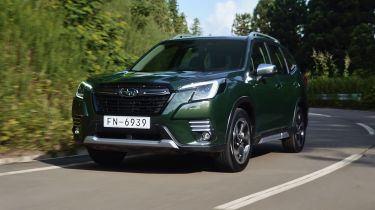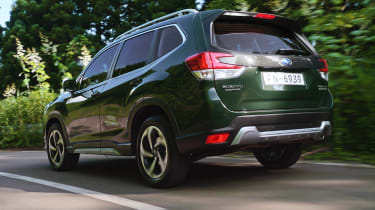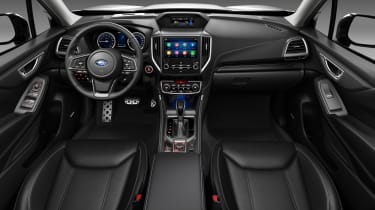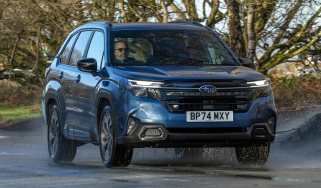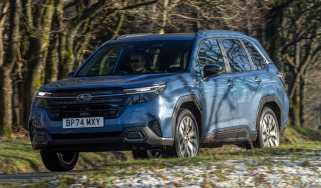New 2023 Subaru Forester: prices, performance and specs
The latest Forester gets a mild-hybrid powertrain and more technology than ever before
Subaru has revised the Forester SUV with added safety features, interior technology and some mechanical tweaks that the company says has improved the car’s ride and handling.
2022’s facelift of the fifth-generation Forester ties in with the model’s 25th anniversary. The new Forester is available to order now, with prices kicking off at £37,895. It once again goes up against the likes of the Ford Kuga, Volkswagen Tiguan and Mazda CX-5 in the mid-sized SUV sector.
Despite being the entry-level model, the XE is well equipped with automatic rain-sensing wipers, automatic LED headlights, heated and power-adjustable front seats with memory function, Subaru’s one-touch folding a reclining rear seat feature, keyless entry and dual-zone air conditioning. An eight-inch touchscreen and 6.3-inch driver’s display is standard across the range.
The mid-range £39,995 Sport model comes with some exterior tweaks such as tinted windows, red or orange accents on various bits of the exterior trim and 18-inch alloy wheels. Inside it gets a heated steering wheel, red or orange stitching on the seats, integrated sat-nav and a powered bootlid.
At the top of the Forester lineup is the XE Premium at £40,985. For the extra outlay, you get a sunroof, 18-inch diamond-cut alloys and leather seats (plus heated rear seats).
Subaru’s biggest update for the Forester is the addition of its fourth-generation EyeSight driver-assistance technology, which is available on all models. All of the system’s sensors now have a wider field of view and there are now an extra three functions – automatic emergency steering, lane-departure prevention and adaptive cruise control with lane centring.
All three trim levels also get an upgraded version of the Forester’s driver-monitoring system. Now, there’s a gesture control function that allows the driver to adjust the climate control by waving their hand – and the system can still automatically adjust the seat position and mirrors simply by recognising the driver’s face with its interior camera.
On the chassis front, Subaru has replaced all of the Forester’s coil springs, which it says has smoothed out the car’s ride and improved its handling. As before, four-wheel drive comes as standard, and every variant gets torque-vectoring differentials.
Like the smaller XV, the Forester now gets Subaru’s e-Active Shift Control system, which automatically senses when the car is driving down a winding back road using G-meters, and adjusts the gearbox shift pattern to make the car feel more agile.
Subaru’s engineers have fiddled with the SUV’s hill descent-control system, too. Now, it only releases the handbrake once the accelerator is pressed – and it re-engages the moment the driver takes their foot off the pedal.
The updated Forester is powered by the same 2.0-litre four-cylinder boxer engine as the previous model, and has an identical output of 148bhp and 194Nm of torque. The engine is assisted by a small 16bhp electric motor that can drive the car on electric power alone for about one mile, at up to 25mph. Subaru says its revised Lineartronic transmission provides smoother, more responsive acceleration.
The mechanical tweaks are rounded off by a handful of styling and functionality tweaks. The Forester’s front end has been redesigned, with a new radiator grille, new surrounds for the fog lamps and slightly rejigged headlamps. Meanwhile, there’s some new cargo hooks for the boot to make sure buyers can take full advantage of the SUV’s 509-litre boot.
Lastly, there’s a choice of three new paint finishes, called Cascade Green Silica, Brilliant Bronze Metallic and Autumn Green Metallic.
Now read our full in-depth review of the Subaru Forester...
Find a car with the experts

